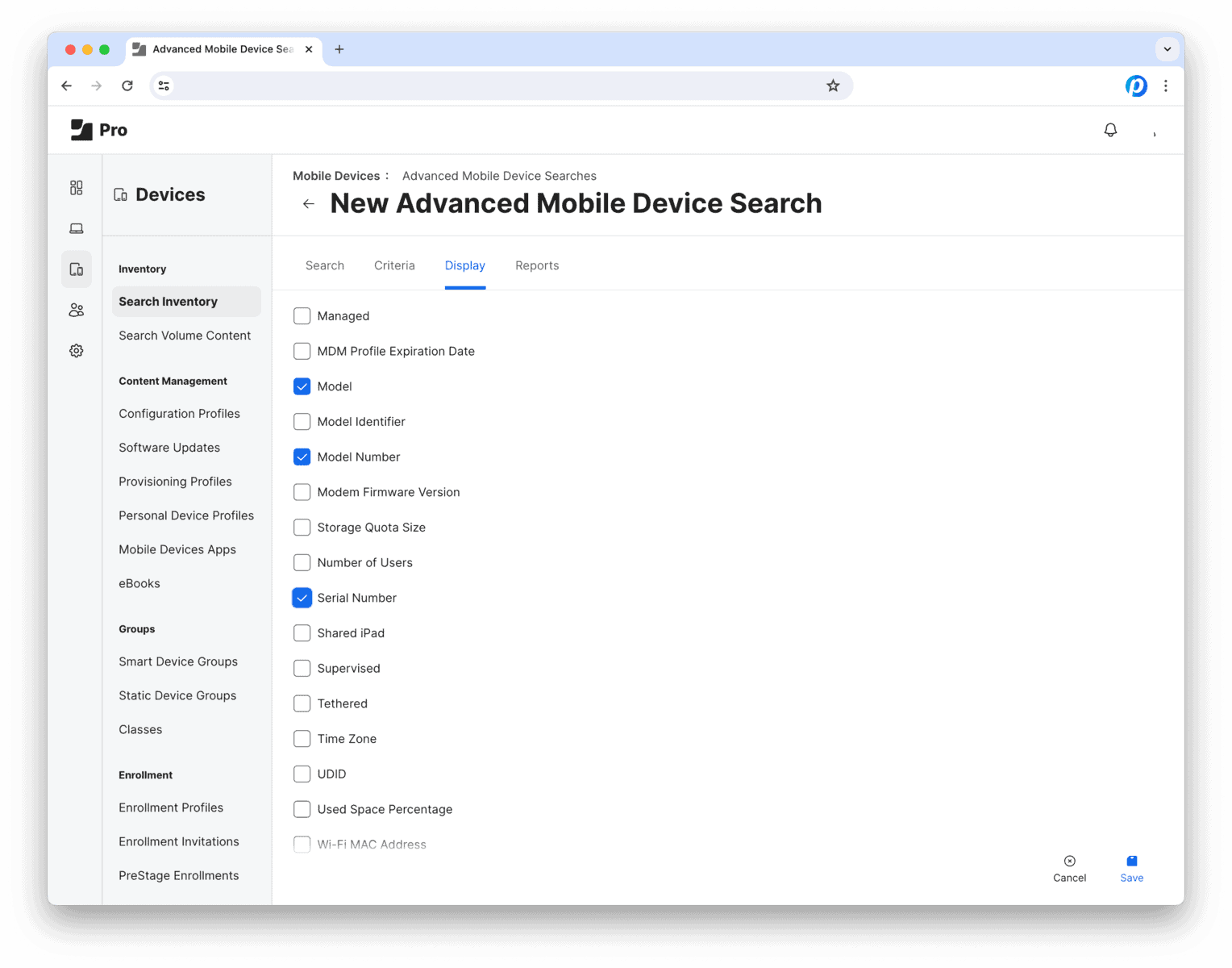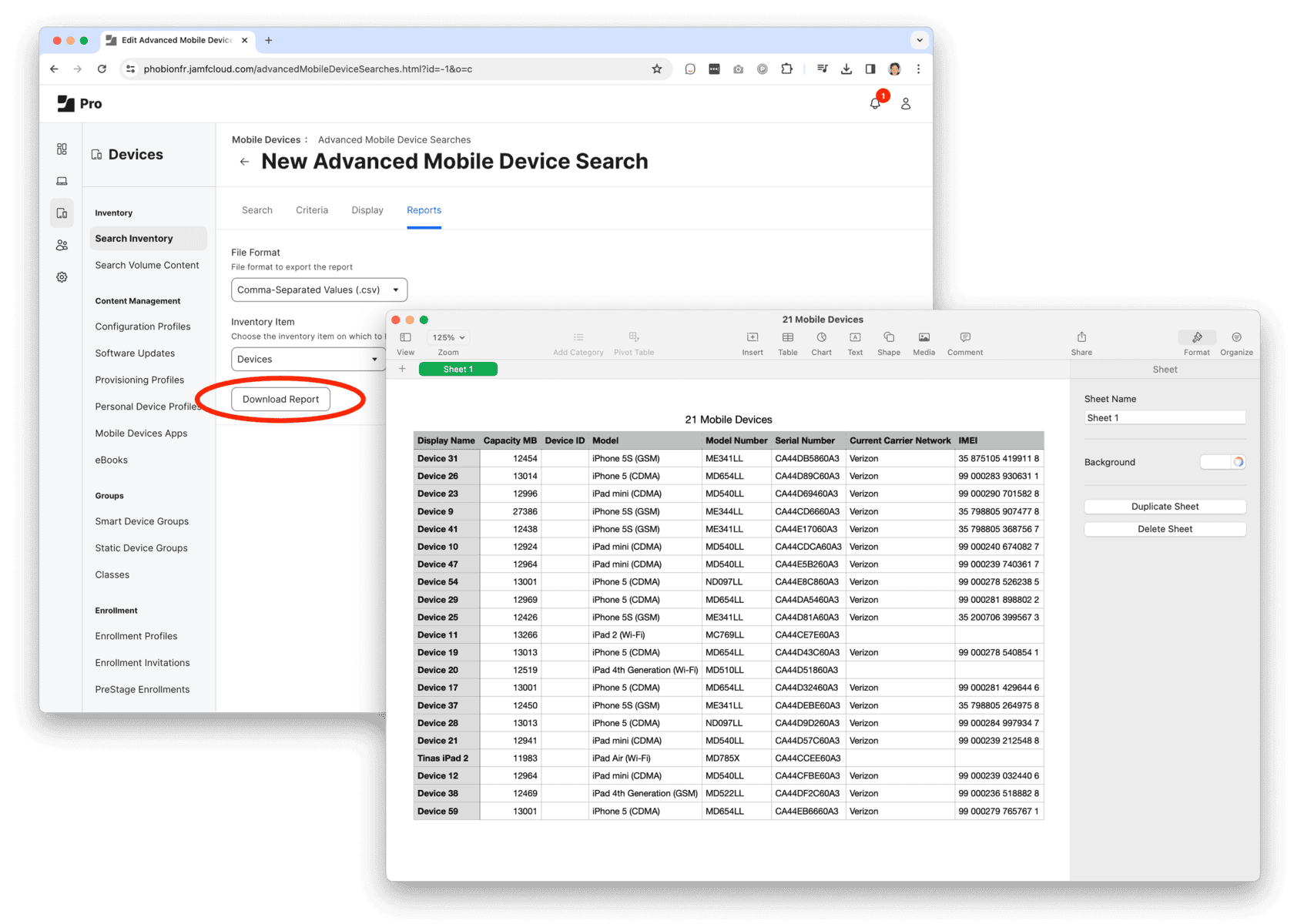Mobile device management involves both software as well as physical asset management that increase the security of mobile devices protecting the content and information. Additionally, mobile device management involves keeping track of the inventory of mobile devices and understanding where the company’s assets are and who is using them.
In companies using mobile device management services, employees often receive devices with software pre-installed to make them secure. These devices likely have a VPN which keeps information secure, GPS tracking, access to data from the company, an email for communication, and applications that are protected by a password to ensure maximum security and that only the specific employee assigned to the device can access it.
The Cycle of Mobile Device Management
Devices only last for a finite amount of time before they get outdated or stop performing, and a Mobile Device Management System can be the primary source of reliable information on a company’s IT assets — making it also the ideal tool to integrate managing the cadence of retiring old devices while procuring and onboarding the new.
Procurement
The first stage in the life cycle is the actual procurement of devices such as smartphones, tablets, and laptops. Many IT Managers purchase devices in larger quantities to lower the cost, but this is not typically feasible for small and mid-sized companies.
Setting Up the Devices
The next stage is enrolling the purchased devices into the company mobile device management system. This allows the company to keep track of the devices, and they can then know when these devices should be upgraded. In addition, it allows the IT department to install any software that they might need.
Next, security settings are configured and can include things like adding tracking software, app wrapping, and more.
Giving Devices to Employees
Accounts are created for users to make sure that they have access to and privileges that they require to perform their job, and devices are given to the employee. Depending on the company, this device might go home with the employee after work hours.
Returning, Reusing, and Recycling
Once the device has reached the end of its lifecycle, it should be given back to the company to be retired and upgraded to a new device, and the cycle will begin anew.
Depending on the condition of retired devices, they should be resold to the secondary market for reuse, so the residual value can be retrieved and reinvested into the company’s IT budget. Phobio provides these Lifecycle Management services for Mobile Device Management partners.
Finally, when devices can no longer be used because they are outdated or do not work anymore, they should behttps://www.phobio.com/mobile-device-management/ recycled. It is important to properly recycle and dispose of devices to minimize environmental waste, as improper disposal can cause hazards to the environment. It is responsible for companies to recycle devices when possible and limit their e-waste.
Types of Mobile Device Management
There are many different components of mobile device management, and they may not all be necessary for every single device. It is up to the company and IT specialists to decide what features to implement on each device and to maintain it.
Mobile device management essentially means following the life cycle of a device and making sure that it progresses at a reasonable rate with minimum losses due to damage or theft. It also involved keeping devices and their contents secure.
Tracking Devices
An important part of mobile device management is tracking the devices so that the IT department can know where the devices are, and there is added security in case the device is lost or stolen.
The IT department will be able to work on fixing any problems and updating the software through this tracking program, which increases the efficiency of device maintenance.
Tracking personal devices also allows the IT department to remotely lock or wipe all information from a device in situations where the device is being misused, lost, or has been stolen.
App Wrapping
App wrapping is when a security feature is added to a specific application by the IT department. This protects the information on this application and makes sure that only the owner of the device or the IT department can access it. App wrapping can affect whether files can be shared from an application, if identity authentication is required to use the app, or if data can be copied and pasted from the application.
These features provide maximum security for important data, and they can be specialized to work for specific people and applications. This flexibility allows each device to be personalized, which maximizes its function.
Identity and Access Management (IAM)
IAM can associate a device with a specific person as the “user.” This can involve using a single sign-on system that requires authentication each time the device is accessed, as well as multifactor authentication that requires multiple forms of identity confirmation.
IAM is very important because it ensures that the devices are protected and that only the employees are using them. It also allows for devices to be easily tracked by the IT department since each device is specifically linked to a single person.
Endpoint Security
All devices that access a corporate network fall under endpoint security. This can include antivirus software, URL filtering, cloud security, and network access control, all of which are important for maintaining the security of a company’s network.
As mobile devices become more prominently used in the workforce, it is important to increase security, especially for companies that deal with sensitive information. There is a lot of data that needs to be protected, and with mobile devices, it is necessary to take the extra step to secure it.
What to Consider When Selecting a Mobile Device Management Solution
The overall goal of mobile device management is to increase the efficiency, productivity, and security of a company. As mobile devices become more prominently used in business, new problems arise that have novel solutions.
Automated reports can be a useful tool in mobile device management. This can help the IT department gain an understanding of what is working and what is not. Reports about the software, usage and status of devices can be created, making it much easier to understand how mobile device management is working.
Automatic updates are also a useful tool to keep devices working well. There are many programs that employees will use on their devices that will need to be updated, and it is inefficient to have to take these devices to the IT department every time they need an update. Automatic updates save everyone’s time and also make sure that the devices are running at maximum efficiency.
Easy search is another element that some mobile device management programs contain. This is a cloud-based approach where anything can be searched for, such as reports, apps, documents, devices, and more.
Decrease Costs and Manage Simply
Mobile device management makes it simpler to manage the life cycle of a device. This creates a system by which devices are purchased, where they are shipped, and received, insuring company devices, managing e-waste, and more. Without a standardized system, device management can be extremely confusing, and there can be issues with purchasing and maintaining these devices.
The cost of mobile devices is easier to manage with a mobile device management system because all of the information is in one place. This makes it easier to predict the costs associated with mobile devices, and it makes it easier for the accounting department.
It also allows for a real-time understanding of mobile devices in the company so that at any time, one can access how many devices the company owns, who has them, how old they are, when they will need to be replaced, and what they are used for.
Storing Devices
Mobile device management also eases the issue of storing and protecting devices. There is no longer a need for many closets with locks and security, and that can save on rent and other costs. When each employee has their own mobile device that can also be monitored by the company, it means that they are personally responsible for keeping track of the devices.
With the increased use of mobile devices in business today, there are new costs that didn’t exist many years ago. These costs can be managed and monitored by mobile device management, and some strategies can reduce costs and waste at the same time.
Environmental Impact
Mobile device management allows a company to be environmentally sustainable as they can reduce purchases of new devices, make proper use of old devices that might otherwise go unused, and recycle e-waste in an environmentally friendly manner.
Investing the time and money to create an efficient mobile device management system will greatly improve the inner workings of the company. There are many great advantages related to reducing costs, increasing efficiency, and becoming more sustainable.
Learn more about Phobio’s Lifecycle Management services for Mobile Device Management partners.








